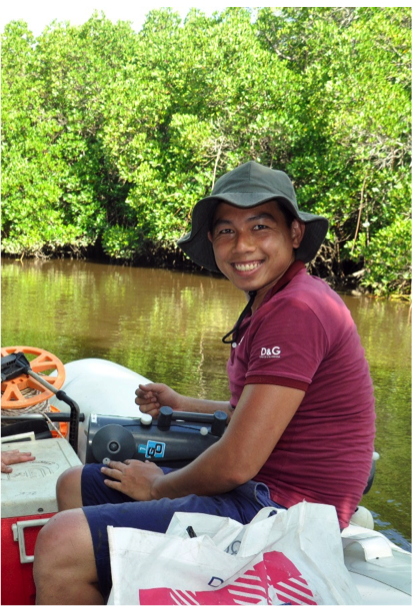NGUYEN Thanh Nho
Biochimie et contaminants / soutenue le 23 juillet 2018

Export of trace metals from mangrove sediments into tidal creeks under different physiographic conditions
University of Science, Viet Nam National University, Ho Chi Minh city (VNU-HCMC) / University of New Caledonia (France)
Supervisors : Cyril Marchand (IRD -IMPMC) ; Trần Thị Như Trang (HCMUS) ; Emilie Strady (IRD-CARE-IGE)
May 2015-April 2018 : bourse BEST-IRD
Study sites : Can Gio Mangrove Forest (South of Viet Nam) / LAFOA and TOMO mangrove forests in New Caledonia (France)
Contrastively to organic matters, metals cannot be biologically or chemically degraded, and thus may either accumulate locally or be transported over long distance. The fate of metals in mangrove forest is complex due their various reactive properties and dynamic redox gradient in organic rich sediments across the intertidal zone. Like the other wetland soils, the adsorption and desorption of heavy metals in mangrove sediments depend on one and/or combination of sediment properties (i.e. pH, organic matter, clay content, redox potential, salinity) that lead to mangrove may act as sink or source in metals.
My research objectives are to understand the behaviors of essential elements and trace heavy metals (e.g. Fe, Mn, Cr, Co, Ni, Cu, As, Cd and Pb) in aquatic and terrestrial environments comprising the bioavailability of metals in mangrove. This study is observing the metal dynamic in estuary and creek in different conditions with spatio-seasonal effect, analyzing the chemical form of metals along sediment depth, assessing the ability of metal bioaccumulations into plants (Avicenia, Rhizophora, etc.) and snails.
This study will involve international collaboration with University of Science in Vietnam, Institut de Recherche pour le Développement (IRD) with UR 206/UMR 7590 IMPMC, 98848 Nouméa (New Caledonia, France) and IGE and with Centre Asiatique de Recherche Sur l’Eau (Viet Nam).

 La fédération
La fédération Intranet
Intranet










